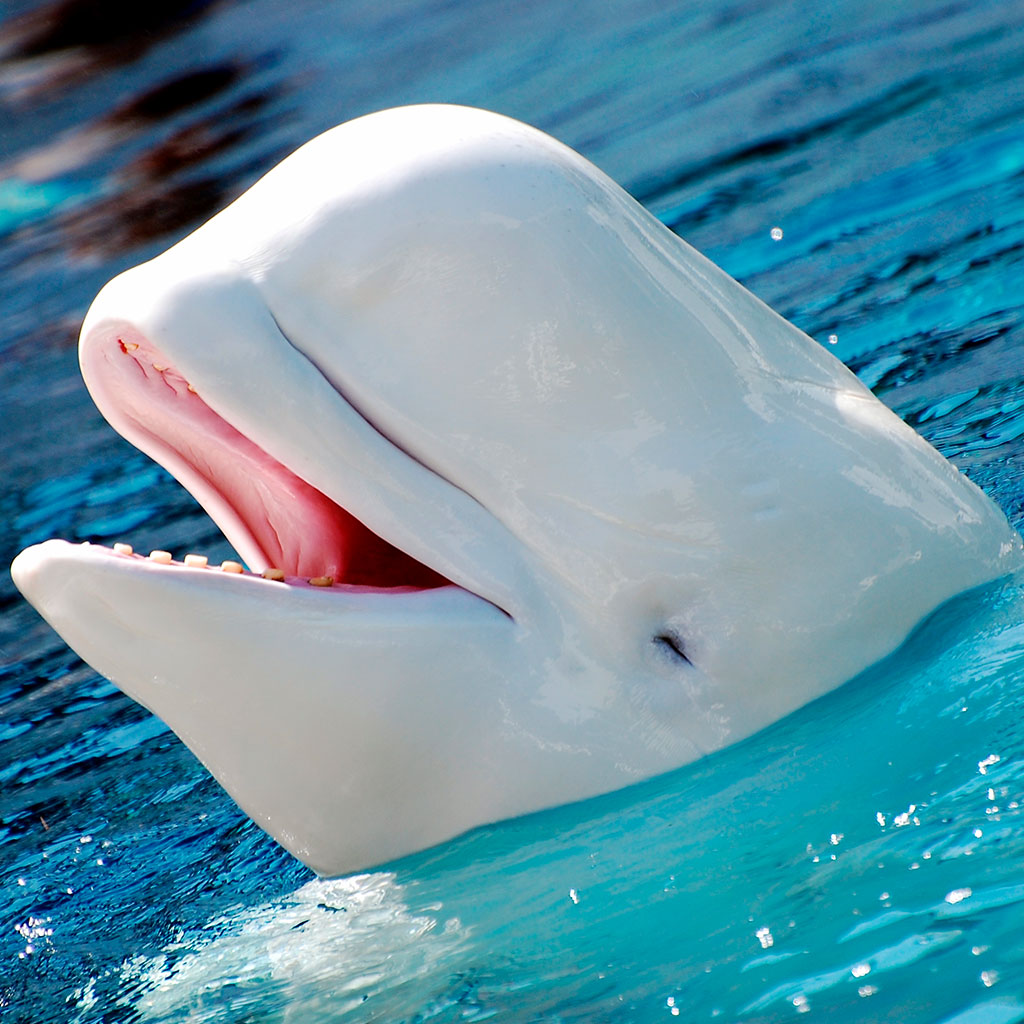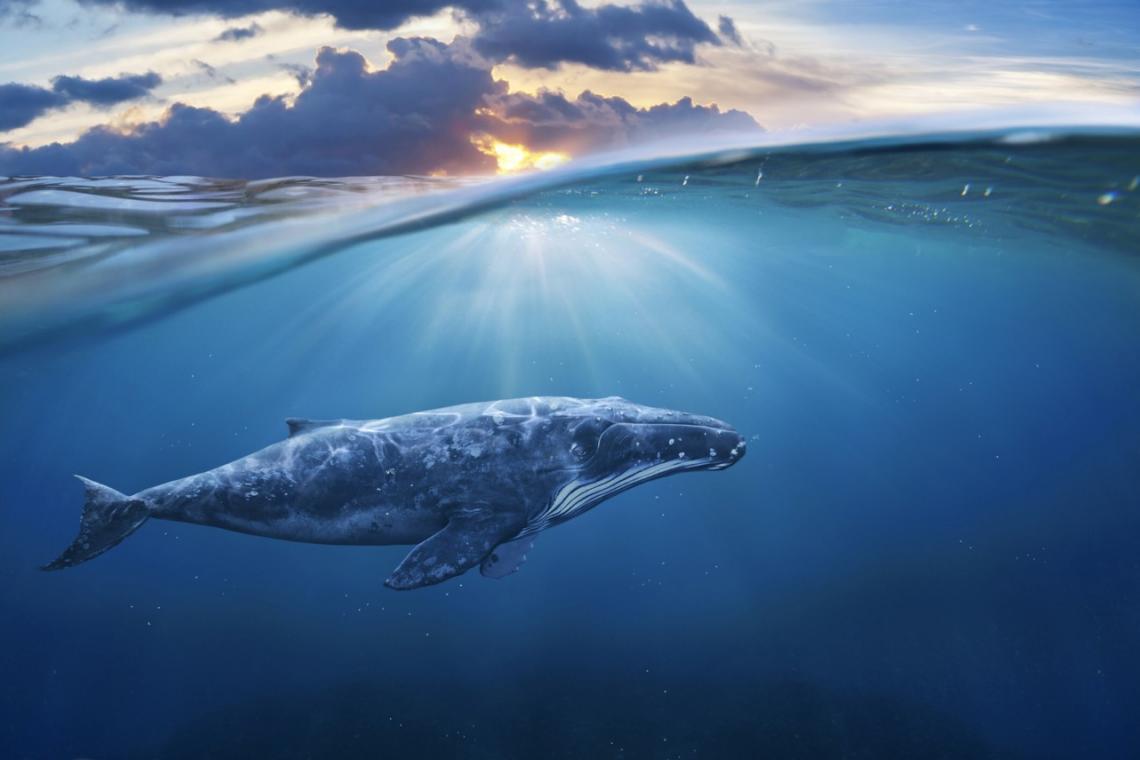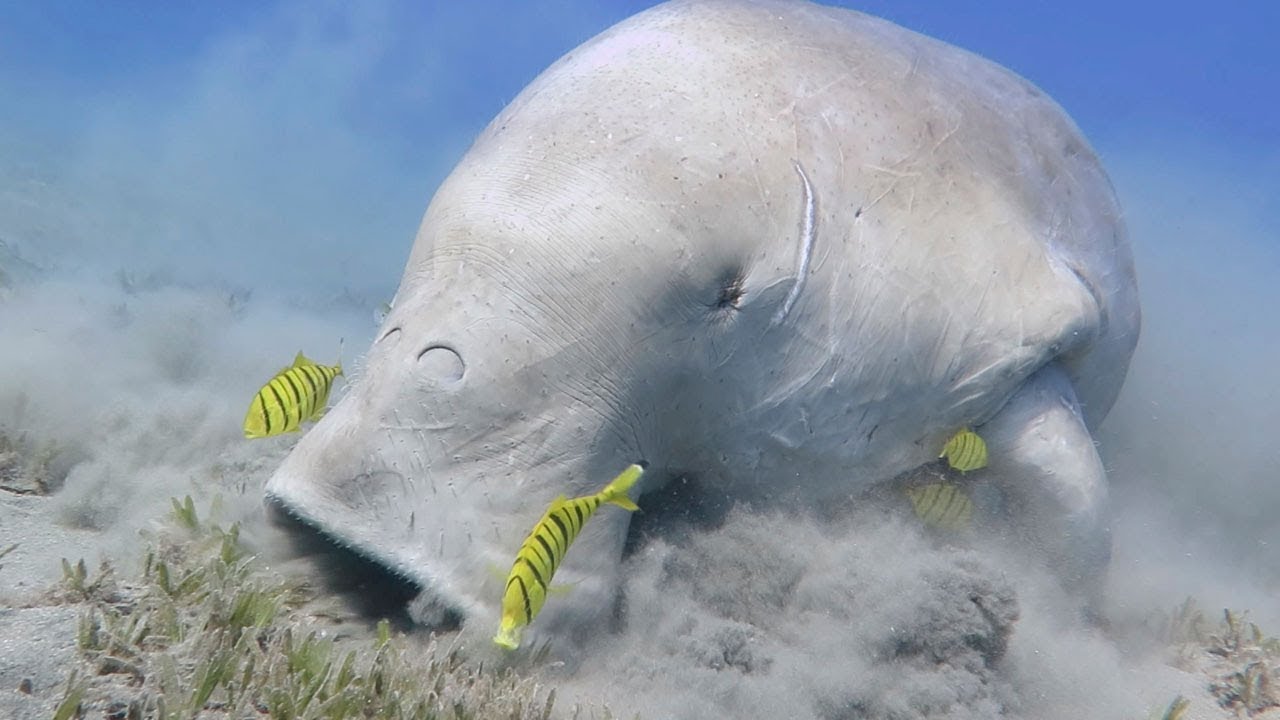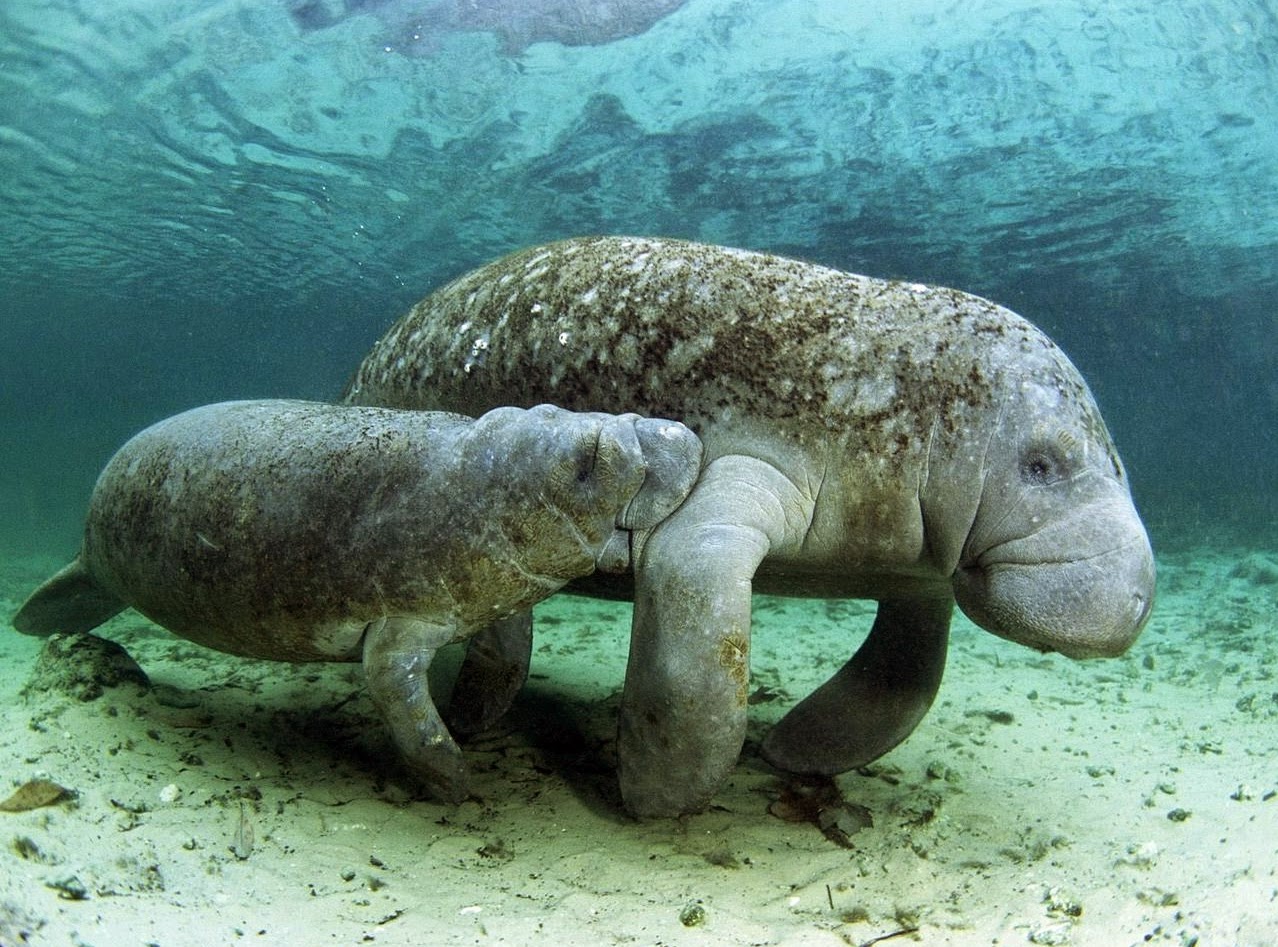The sea mammals They are characterized by having a terrestrial ancestor in their evolutionary line, as well as certain adaptations that allow them to spend a large part of their lives in the aquatic environment. Some species will be mentioned below to know only some of the 13 species that fall into this classification.

Sea mammals
Between 120 and 130 species of marine animals are mammals, many of them belong to different families and orders, even some species that also fall into one of those orders may not be mammals. Therefore, it is not possible to speak of a complete class or of a specific order, but rather of specific genera or species.
What is characteristic of these species is that studies have determined that they adapted to the sea in various ways, in their physical structure, in their diet and in the way in which they self-regulate their temperature. Cetaceans, for example, have totally adapted to the sea to the point that they remain in it all their lives (although dolphins and killer whales sometimes jump on the surface), other species do leave the sea at certain times.
Another point in common between them (and which is quite negative) is that a large part of the 130 species are under protection because they are part of the lists of endangered animals in the world. This for various reasons, the hunting of these animals became a practice for the skin they have, the fat or the oil, because their meat is used to feed certain people, among other things. The truth is that their number has reduced thanks to human activity.
Ordenes
As mentioned, these 130 species do not belong to the same order, family or class. However, the organization of a large part of these species can be made into three groups:
- The first of them is him mermaid order: They are part of the super order called Afrotheria, where terrestrial species such as elephants are found. The aquatic mammal animals of this order are the manatees and dugongs.
- The second is the great Cetacea Order: That includes some fifteen species of whales and more than 70 species of toothed cetaceans. This order belongs to the superorder Cetartiodactyla, where terrestrial species such as camels, giraffes and hippopotamuses are found.
- Then there is the carnivorous Order, which includes the family of pinnipeds that are seals, walruses and seals. There is also the family of the mustelids, where are the sea otters and the sea cats. Finally, it is included among the marine mammal animals polar bears, which although they spend their entire lives on land, have a good adaptation to the marine environment.
Adaptation to the marine environment
These species have in their line of ancestors at least one terrestrial species from which they descend, so it can be said that they have adapted to the aquatic environment in which they currently spend most of their existence. Some adaptations were:
- Hydrodynamic: which allowed them to transform limbs and tails into fins, they stopped having hair and their necks are shorter to facilitate their swimming.
- Thermoregulatory: These species either have thick layers of fat under their skins to control their temperature in the sea, or they have fur that insulates the water (like sea otters).
- Reproductive: Their lips can make a vacuum, which allows the milk not to be lost in the middle when they are in the process of breastfeeding.
- Respiratory: Many species must go up to breathe but their lung capacities are greater than those of other terrestrial species, in addition to that their diaphragm and other parts of their body prevent them from having an embolism when they dive very deep.
Some species
Of the 130 species of marine mammals, the following are the most recognized worldwide:
Whales
Whales are a whole family called Balaenidae that includes four species: Balaena mysticetus, Eubalaena australis, Eubalaena glacialis and Eubalaena japonica. Although when talking about whales, reference is also commonly made to cetaceans of other orders such as the so-called "baleen whales", among them the blue whale or the sperm whale. In any case, all of them are part of the classification of marine mammals.
Whales are quite large compared to other land species, when they are adults they can measure between 15 or 17 meters long and weigh from 50 to 80 tons. Some particular characteristics of these species that differentiate them from other marine animals are:
- When they go to sleep, only half of their brain is the one that “turns off” so that their body does not sink.
- They can live for approximately thirty years.
- They have a tail that is oriented horizontally, which allows them to rise to the surface more quickly and easily.
- Their terrestrial offspring still left an important trait that is that they need to breathe every so often, they can last an hour submerged without coming to the surface, but they need to come up to breathe and that is why they are frequently seen.
- As for their gestation period, they can last a whole year with a calf inside. They can only have one at a time, their young usually measure between five meters or even more, while their weight can be up to 3.000 kilograms, all thanks to their mother's milk-based diet.
- Their diet involves the ingestion of species from the subphylum of crustaceans, although they are mostly those that are small in size and found in the sea, such as copepods. Likewise, they feed on euphausiaceans or krill in great quantity.
As mentioned above, many of the marine mammal species are in danger of extinction. Whales are one of those specific species, this species has been hunted since the eleventh century and very easily since their large size prevented them from moving quickly and fleeing from their captors. In addition to that, they did not sink when they died because their body contains a lot of fat, so their capture was really easier.
Dolphins
Dolphins are a family that has more than 30 species worldwide, they are carnivorous, but they interact a lot with people because they live in areas of the sea near the coast. They can measure between 2 and 8 meters long, although there are specimens that have been described with a size greater than that limit.
The intelligence of this species is a characteristic always mentioned when talking about them, compared to other species, in addition to that they are very sociable, always staying with groups of up to 1000 dolphins. Even so, the fights between them are quite violent, however this is not very frequent. In fact, they tend to take care of each other when there is a member of the group who is sick or has an injury.
As for their reproduction, in the first place they can be in the process of gestation for a whole year or only eleven months. Although one of the species of the Delphinidae family - the killer whale can last up to 17 months. Their young are born one at a time and remain with their group until they reach sexual maturity, some longer. However, this familiar behavior is not the same in all species.
Their diet consists of other marine mammals, although they also eat small fish, they usually hunt using their great speed or the echolocation that is typical of these species.
dugongs
Dugongs are sirenians found in the world as only one species, they can be up to three meters long and weigh more than 200 kilograms. They are similar to some cetaceans and even manatees. They are found in Africa, in Madagascar, in India, in the islands of French Polynesia, in China (specifically in the Hainan islands), in Taiwan, in the Philippines, Indonesia, among other places.
The reproduction of this species begins when they are already 9 or 15 years old, which is when they are already sexually mature. They can live more than 50 years and it has been shown that some specimens have lived for 70 years, this if they are not hunted before, of course, taking into account that they are captured for the meat they have and their fat. Only in Australia are there laws that protect them, otherwise their population has decreased, placing this species on the list of endangered aquatic animals.
manatees
Manatees or sea cows are marine mammals that reproduce every 2 to 5 years, depending on their mother. Which keeps her young next to her for two years or a little more giving her milk until the moment when her teeth already have such a formation that allows them to feed themselves. Their life expectancy is 80 years, something that has been sought to be maintained thanks to the laws of certain countries that have classified them as protected species.
Other commonly known marine mammal species are:
- porpoises
- the walruses
- sea otters
- killer whales
- the seals



